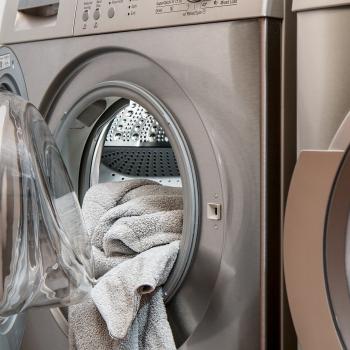When the writers at the Good Men Project began putting up a series of posts addressing rape, they were right to point out that most rape occurs between friends and acquaintances. They were also right to point out that many of society’s messages about sex and gender – for example, that men are supposed to keep pushing when a woman originally says “no” – feed into rape culture. These are excellent points, and are things feminists have been saying for quite some time. Unfortunately, though, the Good Men Project’s writers didn’t stop there. Let’s start off with this example:
The confusion about when social intercourse turns into sexual intercourse is real, and we are all, in large part, to blame for it because we don’t address the underlying mythologies and mixed messages about what sex is. Without letting anyone off the hook for committing rape, we have to look at how we are all accomplices in making women’s bodies and sexuality a prize and something to which some men feel entitled, especially when they’re wrapped in pleasing packages and smiling in an inviting way. So while the individual rapist is solely responsible for the rape he committed, we all—as a society—are responsible for the culture that created the confusion.
It’s true that society, and especially the media, sends some pretty messed up ideas about women’s body. However, despite what this writer wants to maintain, there is no way to blame society for creating “confusion” around ideas like consent and rape without also removing some of the responsibility for rape from rapists. By arguing that “nice guys” commit rape too, and in placing the blame on society’s mixed messages (and also on women themselves, with their “inviting” smiles), the writers at the Good Men Project remove responsibility from the men who commit rape.
The original story about rape that went up on the Good Men Project recently was by writer Alyssa, who wrote that a friend of hers confided in her that he accidentally raped a woman. He told her that the girl he was at a party with had been flirting heavily with him, and that when she passed out he didn’t realize it would be wrong to penetrate her unconscious body. Alyssa blames society’s messages for leading to a situation where her friend could accidentally rape someone. In a follow-up post, Alyssa, insisted that she was not removing any of her friend’s responsibility for the rape, or placing any blame on his victim. She included this image to clarify:
The image shows two graphs, the first labelled “Wrong” and the second labelled “Right.” The first is a pie graph broken up into “Alyssa’s friend’s responsibility” and “Society’s responsibility.” The second is a Venn diagram, with two overlapping circles labelled “Alyssa’s friend’s responsibility” and “Society’s responsibility.” The part where they overlap is labelled “the space where society’s damaging model of consent (or lack thereof) meets a person capable of rape.” In other words, the writer is insistent that Alyssa’s friend can be 100% responsible for committing rape while society also shares responsibility.
Unfortunately for the Good Men Project, offering these graphs as explanation fails. Why? Because the original post about Alyssa’s friend included this excerpt:
To a large degree, my friend thought he was doing what was expected. And while he was wrong, weeks of flirting, provocative dancing and intimate innuendo led him to believe that sex was the logical conclusion of their social intercourse. Many people watching it unfold would have thought that, too.
Of course they would all be wrong. But if something walks like a fuck and talks like fuck, at what point are we supposed to understand that it’s not a fuck? Our binary language of “yes means yes” and “no means no” doesn’t address the entire spectrum of both spoken language and body language, which mean different things to different people.
I would love for “no means no” to work, but it doesn’t.
How do I know it doesn’t work? I know because my friend raped someone and didn’t even know it. I know because on any given night, people who think they are having drunk party sex with a partner who wants it are actually committing rape. Rape, although clear as hell at the ends of the spectrum, often exists in the dark murky world of mixed signals, confusing messages and alcohol. It happens to “good girls” who didn’t ask for it, and it happens at the hands of “good guys” who honestly didn’t know that’s what they were doing.
The Good Men Project writers can claim all they want that they think Alyssa’s friend was 100% responsible for the rape he committed, but they cannot claim that and say that Alyssa’s friend had honestly no idea that what he was doing was wrong, and that he simply thought he was doing “what was expected.” What the Good Men Project is doing, no matter how it tries to deny it, is shifting blame for the rape committed by Alyssa’s friend from him to society as a whole, and the messages people receive about gender and sex.
The Good Men Project may acknowledge the existence of rape culture, but I think at some level its writers fundamentally misunderstand what “rape culture” is. Rape culture is not a culture where it’s easy to “accidentally” rape someone. Instead, rape culture is “a culture in which rape and sexual violence are common and in which prevalent attitudes, norms, practices, and media normalize, excuse, tolerate, or even condone rape.” In other words, rape culture is not about poor confused guys accidentally raping girls, but rather about people making excuses for guys who rape girls. The Good Men Project writers think that they’re valiantly fighting rape culture, but what they’re actually doing is feeding it.
The Good Men Project also fails when its writers declare that “no means no” and “yes means yes” does not work. To be clear, they don’t say that the simple idea of consent doesn’t work because rapists don’t care about consent, but rather because consent is just too confusing. In fact, they act act as though it can be challenging for a man to go through life without accidentally raping someone.
I have a brother who is both in college and in the Army. He’s in the demographic the Good Men Project is talking about, so I talked with him about these articles. “Is consent confusing?” I asked him. His response was to act both indignant and a bit offended. No, he told me. Consent is not confusing. He went on to tell me that he has been through numerous Army rape prevention programs, and that he has been taught not only that you need sober consent before having sex with a woman, but also that you need a verbal “yes.”
At the end of the day, consent is not confusing, ideas like “no means no” and “yes means yes” are not complicated, and arguing that nice men commit rape accidentally because they are “confused” by how “complicated” consent is is not okay. The writers at the Good Men Project are right that society sends people some pretty messed up ideas about women’s bodies and about proper gender relations. They’re also right that most rapists are normal guys, not monsters in back alleys. Unfortunately, though, they fail miserably when they move beyond this.















